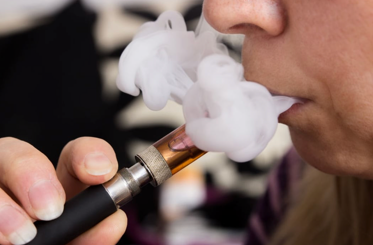The rise in popularity of vaping among young people in Southeast Asia is deeply concerning. Vaping has surpassed traditional smoking among adolescents in some countries. This article explores the surge in vaping among youth in Southeast Asia and examines the regulations and enforcement measures being implemented to manage its growing impact
The focus of the tobacco industry has moved away from traditional cigarettes, to e-cigarettes, as demand increases. The industry has been highly effective at targeting youth through sophisticated marketing campaigns, utilizing social media platforms and influencers to promote vaping as a fashionable lifestyle choice, making it seem glamorous and exciting.
The World Health Organisation has been raising concerns for some time due to the significant increase in vaping, particularly among adolescents worldwide, raising alarms about potential long-term health consequences, addiction, and the normalization of e- cigarettes. Despite these warnings, marketing strategies behind vaping have played a crucial role in its widespread adoption among youth.
Marketing tactics, such as introducing enticing flavours and online promotions focusing on the younger market, have made vaping appear trendy and cool. Vape cafes, trade shows and online communities also contribute to its popularity, by promoting a lifestyle that appeals to youth, combined with the widespread availability of cheap, disposable vapes. Recent studies have shown that many young people perceive vaping as safer than traditional cigarettes, despite evidence to the contrary. This belief is often fuelled by misleading information and a lack of awareness about the actual health risks. The most significant impact of the vaping surge has been on public health. Vaping can cause nicotine addiction, which can have permanent effects on the developing adolescent brain. It also exposes users to harmful chemicals and heavy metals, increasing their risk of respiratory, cardiovascular, and other diseases. As a result, vaping-related health issues become more common, increasing the burden on healthcare systems.
The involvement of criminal gangs in lacing e-cigarettes with chemical substances exacerbates the situation by not only increasing public health risks but also facilitating drug distribution and contributing to violence and criminal activities. These syndicates import and sell unregulated products via black markets, often laced with dangerously high levels of nicotine or even synthetic drugs. TheUnited Nations Office on Drugs and Crime (UNODC) confirmed in a recent report, that vapes are now available containing cannabinoids and synthetic drugs, not just nicotine, hooking more youth on drugs. There is evidence to show that vapes sold in Asia are increasingly available laced with synthetic drugs and pharmaceutical products like etomidate. In Malaysia the Health Ministry revealed that 65.6 percent of vape liquids seized in 2023 and 2024 were found to contain dangerous drugs.
There is a consensus amongst health experts that the vaping crisis in Southeast Asia needs to be tackled using a multi-sectoral approach to be effective. This includes stronger regulations, public health campaigns, youth education, and community-based interventions. The World Health Organization (WHO) agrees. A multifaceted approach is required that stresses the importance of accelerating tobacco and e-cigarette control measures to protect future generations.In many Asian countries regulations have not kept pace with the rapid growth of the vaping market. Weak or non-existent laws on sales, advertising, and product standards have created an environment where youth can easily access these products. WHO has recommended that Government action should include the regulation of social media platforms. Many platforms have policies against promoting tobacco and nicotine products but lack of consistent enforcement has allowed the marketing of vapes to millions of young users. The enforcement should be combined with raising fines and penalties for individuals caught selling or possessing vapes, especially those targeting minors, combined with education campaigns aimed at young people and their parents.
The regulatory responses to vaping vary across Southeast Asia, from strict bans to minimal enforcement. In 2025 Cambodia has taken a firm stance by banning e-cigarettes. Strong anti-tobacco policies have also been implemented in Thailand and Singapore, including an outright ban on vaping and a complete ban on the sale, importation and distribution of vaping products. Countries like Indonesia and the Philippines have opted for stricter regulations, including banning flavoured e-liquids and increasing the minimum age to purchase vaping products, in addition to only allowing vaping in designated areas.
Amongst South East Asian countries Singapore has been the most proactive. In 2024 Singapore recorded a surge in vaping arrests and an increase in the use of e-cigarettes as a delivery device for drugs. The Government has taken the vaping surge very seriously, especially with e-cigarettes being increasingly used as a delivery device for drugs. According to Ong Ye Kung, the Health Minister, out of 100 vapes seized and tested at random, one in three contained the drug etomidate. ‘The real danger is what’s inside,’ said Prime Minister Lawrence Wong, during his National Day Rally speech. ‘Right now, it’s etomidate. In future, it could be something worse, stronger, far more dangerous drugs.’ The e-vaporisers are delivery methods and the contents are unknown. Etomidate, a potent anaesthetic agent that has been increasingly found in vapes, was classified as a controlled drug under the Misuse of Drugs Act on 1st September 2025. This means that anyone caught using a drug enhanced vape in Singapore can be treated like a drug user and subjected to the same consequences as people using other drugs: mandatory drug detention and drug supervision. Singapore has been trying to get the message across to its youth through ‘The Invisible Crisis’ campaign, in an effort to raise awareness. It has also advocated for measures like a public vaping reporting app. A new initiative, ‘Bin the Vape’, invites people to dispose of their vapes in red bins that are rolled out across the country, allowing citizens to surrender vapes without facing the new legal penalties.

Photo: Singapore Vaping Plays you campaign- Health Promotion Board
Thailand has one of the world’s harshest anti-vaping regimes, having implemented sweeping bans in 2014 making it illegal to vape anywhere in the kingdom. Although e-cigarettes are illegal in Thailand, they continue to be sold openly. This lack of enforcement contributes to the rise in vaping among young people. Vaping rates among 15 to 29 year olds, increased from 5.8% in 2019 to 12.2% in 2024. WHO and Thai public health authorities are calling for better enforcement of the regulations, noting that tobacco and nicotine companies are using ever-evolving digital strategies to circumvent protective bans. In April 2025, the Government announced a further crackdown which, in addition to smugglers and distributors, targets vapers. Both smokers and sellers can now be sentenced to prison terms and large fines. The government has also launched a public outreach program through the Thang Rath mobile app, allowing the public to report illegal e-cigarette activity and to pocket up to 60% of the resulting fines.
Malaysia is inching closer to a full nationwide ban on vaping. On 21st August 2025, the country’s health minister confirmed that a detailed report on the proposed prohibition of e-cigarettes and vapes was being finalized by a Health Ministry expert committee. He stated, ‘It is no longer a question of if we ban, but when we ban.’ Malaysia’s stricter stance is driven by mounting health concerns and the discovery of illicit substances such as THC, fentanyl, and cocaine in vape liquids. Vaping has surged among Malaysian teens, especially those aged between 13 and 17. The government sees vaping as a gateway to nicotine addiction, with long-term health consequences. It is looking to neighbouring Singapore’s strict anti-vaping stance which treats vaping as a drug issue. In less than three years, Malaysia’s stance on vaping has shifted dramatically from tax-driven legalization to the brink of prohibition. Currently only two Malaysian states have fully banned vaping.
The Philippines has banned vaping in public places and is cracking down on illicit vape products and sales through increased enforcement.Key initiatives include seizing smuggled and unregistered vape products, warning e-commerce platforms to remove illegal listings, and prosecuting individuals involved in the illicit trade to protect the public from health risks. There is public pressure to increase penalties and surveillance to ensure compliance and public awareness. Campaigns have been introduced to educate parents and young people about the risks of vaping and the importance of adhering to regulations under the existing Vape Law. But reports suggest that the campaign against vaping has lacked government commitment, despite increasing evidence of vaping devices being used to deliver drugs.
Indonesia is the second largest cigarette market in the world and has the highest number of male smokers in Southeast Asia. However, the Government’s policy has been to control tobacco products rather than directly prohibit these hazardous products. The inadequate law enforcement in Indonesia makes it easy for the public to access vaping products.
Indonesia has recently implemented new, stricter regulations on vaping, mirroring the controls on conventional tobacco products. These measures come despite the country previously having a more relaxed regulatory approach, which allowed for the legal sale and use of vaping products. The health ministry has raised concerns about potential health risks of vaping, in particular nicotine addiction and long-term effects, especially among young adults. New stricter measures include banning vaping in some public places and raising the minimum age for purchasing vapes to 21. The Government still views vaping as a viable and less harmful alternative to cigarettes.
The vaping crisis in Southeast Asia is a complex issue with many challenges and significant public health implications. The crisis requires a comprehensive and collaborative approach, addressing the root causes and high demand among youth, with stricter enforcement against organized crime networks. Strict legislation, surveillance, public awareness campaigns, legal penalties and community programs, all remain crucial for long-term success in curbing both use and vaping-related crime.
Disclaimer: The opinions expressed in this article are solely those of the writer. The author assumes no responsibility or liability for any errors or omissions in the content of this article. The information contained in this article is provided on an ‘as is’ basis with no guarantees of completeness, accuracy, usefulness or timeliness.

